Chinese naval fighters based at coastal airfields
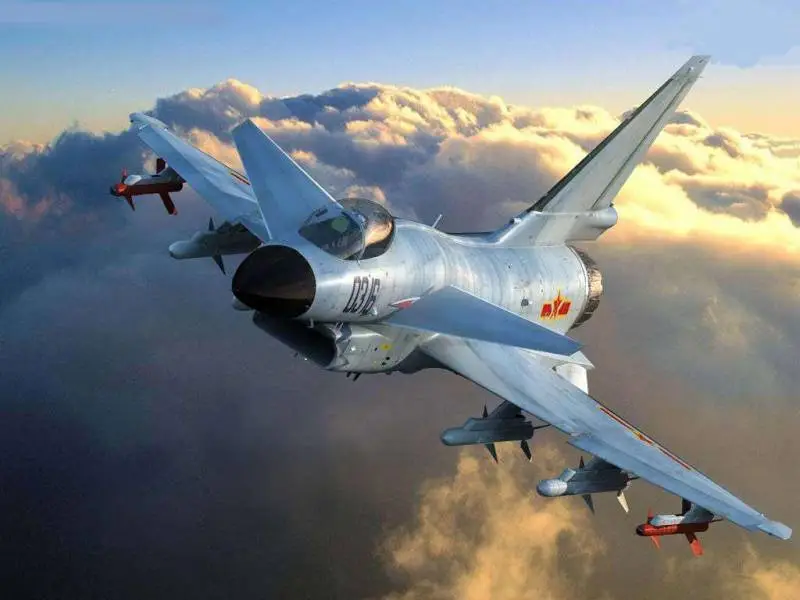
As part of aviation The PLA Navy has fighter aviation regiments armed with shore- and carrier-based fighters. The main purpose of fighter aircraft based at land airfields is to provide protection from air attacks on port infrastructure and ships located at naval bases. Also, naval fighters are responsible for escorting JH-7A tactical missile-carrying bombers and H-6G/J long-range missile carriers within their radius.
Modern Chinese fighters are capable of fighting enemy ships in the coastal zone using anti-ship missiles. The main task of carrier-based fighter pilots is to provide air defense for their own strike group, led by an aircraft carrier, operating in the ocean. In 2022, the PLA Navy's aviation armament included up to 150 single-seat and two-seat ground- and carrier-based combat training fighters.
J-8DF interceptor fighter
According to information published by the International Institute for Strategic Studies in 2022, the Northern Command Naval Aviation Forces had the 15th Fighter Wing (Laishan Air Base), armed with J-8DF interceptors. Judging by publicly available satellite images, these planes were still there in 2023.
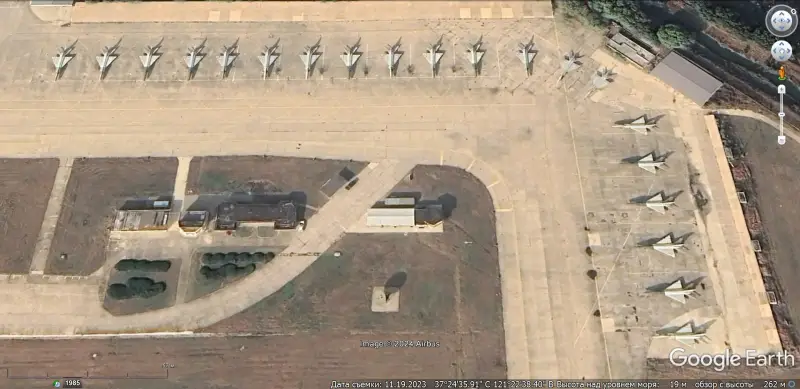
Google Earth satellite image: J-8DF interceptor fighters at Laishan Air Base, taken in November 2023
The J-8DF interceptor is close in its flight characteristics and appearance to the Soviet Su-15, but structurally they are different machines.
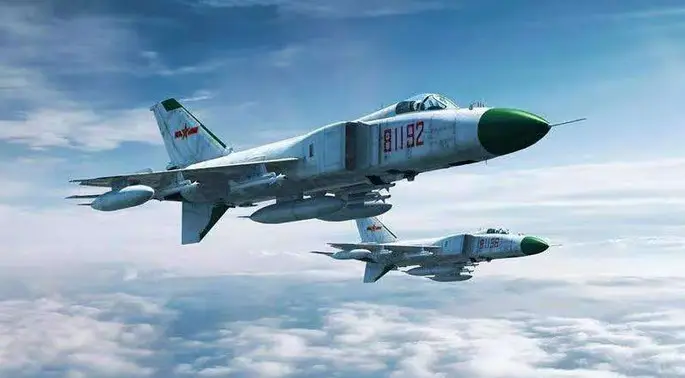
Contrary to popular belief, the twin-engine J-8, which also has a delta wing, was not created on the basis of the single-engine J-7 (a copy of the MiG-21).
The J-8DF interceptor still flying is the most advanced version of the J-8II family, which traces its ancestry to the J-8A aircraft (a functional analogue of the Su-9, withdrawn from service in 2010).
The main disadvantage of the J-8 interceptor (first flight in 1965) was the impossibility of installing a large radar on it, which is due to restrictions imposed by the size of the air intake cone. This aircraft, armed with close-range missiles with an infrared seeker, could be aimed at a target based on commands from the ground.
In the second half of the 1970s, the design of an interceptor with side air intakes began on the basis of the J-8. The layout of the front part of the J-8II interceptor, which first flew in June 1984, was influenced by the familiarity of Chinese specialists with Soviet MiG-23 fighters received from Egypt.
The cone-shaped nose of the J-8II houses an SL-4A (Type 208) radar with a detection range of up to 40 km. Flight performance was improved by installing more powerful engines and reducing aerodynamic drag. In addition, the radically modernized interceptor has become stronger.
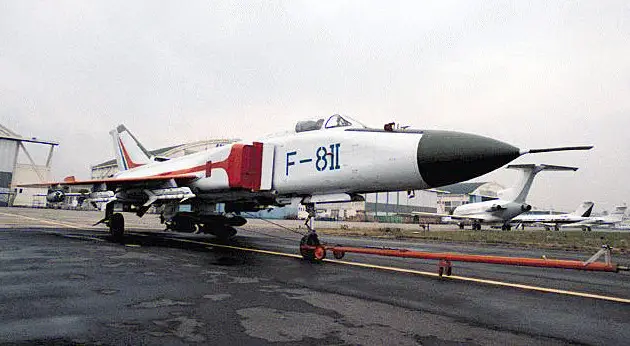
J-8II prototype presented at Le Bourget 1989
The Americans provided significant assistance in improving avionics and weapons in the late 1980s. The J-8B aircraft received new communications and navigation equipment, and most importantly, the SL-8A radar with a detection range of 70 km. After modernization, installation of in-flight refueling equipment and PL-11 medium-range missiles (a copy of the Italian Aspide Mk.1 missile launcher) with a firing range of up to 55 km, the aircraft received the designation J-8D.
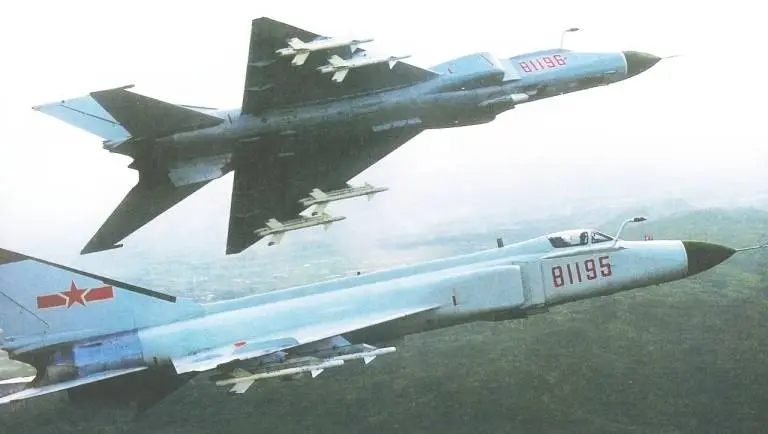
The interceptor's standard armament consisted of two PL-11 medium-range missiles with semi-active radar guidance and two PL-5 or PL-8 close-range missiles (a copy of the Israeli Python-3) with a thermal homing head.
As part of the next modernization, the J-8D interceptors were equipped with a Type 1492 radar, capable of seeing an air target with an ESR of 1 m² flying towards them at a distance of up to 100 km. PL-12 missiles were introduced into the armament. The interceptor with a new radar, improved weapons control system, navigation and communications equipment was designated J-8IIDF. Deliveries of this modification began in 2005.
Two WP-13BII engines with a total afterburner thrust of 137,4 kN allow acceleration at high altitudes of up to 2 km. Maximum take-off weight is 300 kg, normal - 18 kg. Thrust-to-weight ratio – 880. The combat radius without air refueling, with external tanks, exceeds 15 km. The maximum operational overload is up to 200 G. Some interceptors were equipped with a WP-0,98 turbofan engine with a total afterburning thrust of up to 900 kN, which significantly improved the thrust-to-weight ratio and acceleration characteristics.
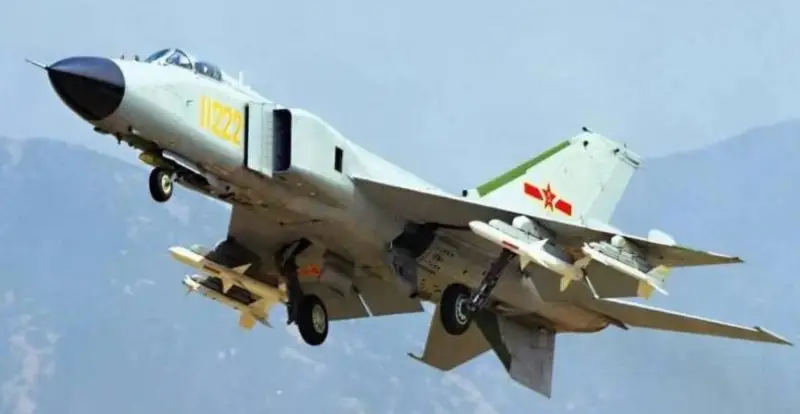
The main means of engaging air targets are PL-12 and PL-8 missiles with a maximum launch range of 80 and 20 km.
The construction of new J-8DF interceptors continued until 2008, and the modernization of previously built aircraft continued until 2012. According to American data, the Chinese aviation industry has produced approximately 350 J-8II aircraft of all modifications. Although not many J-8II interceptors were made by Chinese standards, they have long played an important role in the PRC’s air defense system and were operated in parallel with the Russian Su-27SK and their Chinese clones.
An incident involving a J-8D that occurred on April 1, 2001 caused a lot of noise.
On this day, the crew of the YLC-4 radar station, located in the southeastern part of Hainan Island, detected an air target flying at an altitude of 6 m at a speed of about 700 km/h along the border of Chinese territorial waters. Two interceptors from the 370th Fighter Regiment, part of the 25th Naval Aviation Division of the Southern Theater of Operations, took off towards an unidentified air target from the Lingshui airbase, located on the eastern coast of the island.
After approaching the target, Chinese pilots identified it as an American electronic reconnaissance aircraft EP-3E ARIES II - created on the basis of the anti-submarine P-3 Orion. Having discovered interceptors nearby, the Americans dropped to 2 m and slowed down to a minimum. Since the stall speed of the J-400D jet is much higher than that of a turboprop aircraft, according to the EP-8E commander’s plan, this should have forced the Chinese to gain altitude and stop pursuing.
However, the calculation did not work; during the third flight of the intruder aircraft, during close maneuvering, one of the interceptors collided with an American reconnaissance aircraft and fell into the South China Sea. Its pilot went missing and was later pronounced dead.
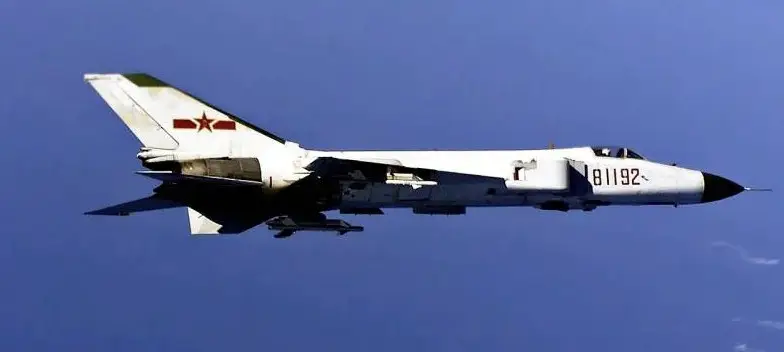
The J-8D interceptor collided with the American RTR EP-1E ARIES II aircraft on April 2001, 3
The EP-3E aircraft did not receive fatal damage as a result of the collision and was able to continue its flight. Under threat of use weapons he was landed on Hainan Island.
The American crew did not have time to completely destroy the classified materials on board. The Chinese military had at its disposal cryptographic and intelligence equipment, encryption keys, call signs and lists of radio frequencies, information regarding the operation of radar posts of the PRC, Vietnam, North Korea and Russia.
The US administration had to apologize for what happened and pay monetary compensation to the widow of the deceased pilot. After which the Chinese government abandoned the trial of the American military, and the crew of 24 people was released. The electronic reconnaissance aircraft was dismantled and returned to the United States on July 3, 2001 on board the Russian An-124 heavy transport aircraft, after which the EP-3E, gutted by Chinese specialists, was written off.
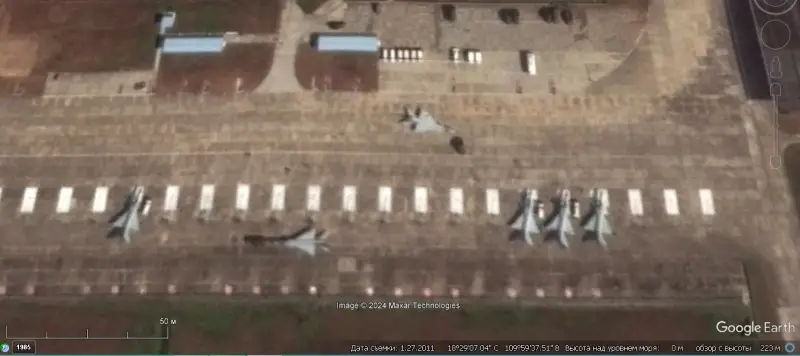
Google Earth satellite image: J-8D interceptors at Lingshui Air Base, taken in January 2011
In 2012, the pilots of the 22nd IAP handed over their J-8D interceptors and began retraining for J-11B heavy fighters, more suitable for long flights over the sea.
Currently, the Chinese delta-wing interceptors are obsolete, and in the near future the pilots of the 15th IAP will switch from their J-8DF to new modern fighters.
About a dozen J-8DF interceptors can be seen in the parking lots of the Jiaozhou air base. Judging by satellite images, these aircraft are not flying and have been in reserve since June 2022.
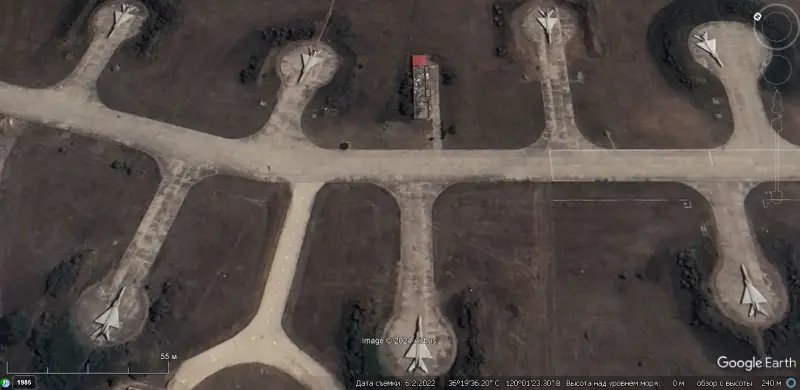
Google Earth satellite image: J-8DF interceptors at Jiaozhou airbase
Taking into account the fact that in the past, unmanned versions of the J-6 and J-8A fighters were tested at Jiaozhou Air Base, it is highly likely that the interceptors stored here will also be converted into supersonic radio-controlled targets and decoys designed to break through air defenses.
J-10 light fighter
As of 2022, the only air unit operating the J-10A light single-seat fighters and J-10AS two-seat combat trainers was the 12th Fighter Wing, 4th Air Division, Naval Aviation Forces Eastern Command, stationed at Luqiao Air Base. In total, the 12th IAP has 24 fighters.
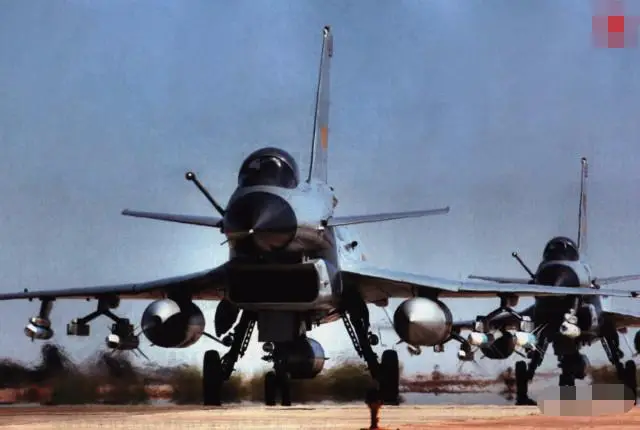
By the mid-1980s, after the failure of a number of attempts to independently create a fighter capable of successfully competing with the latest Soviet and American air superiority aircraft, the Chinese leadership came to the conclusion that it was necessary to purchase such a fighter abroad.
After the normalization of relations with the USSR, an agreement was concluded on the purchase of a batch of Su-27SK heavy fighters and the establishment of their licensed assembly at an aircraft plant in Shenyang. Moscow also offered Beijing the lightweight MiG-29, but after examining it, experts from the Middle Kingdom decided that this machine was not suitable for them.
At that time, the basis of Chinese fighter aviation was the J-6 (a copy of the MiG-19), and there were also many single-engine J-7s (a copy of the MiG-21). The service of the J-6 in combat air regiments ended in 2012, and the production of new modifications of the J-7 continued until 2013. However, it was clear that it was impossible to improve the J-7 indefinitely.
And although the export JF-7 was subsequently developed on the basis of the J-17, the Chinese military leadership decided that the heavy twin-engine fighter should be complemented by a new, relatively inexpensive, lightweight single-engine fighter, made from modern materials, with high maneuverability and thrust-to-weight ratio, equipped modern avionics and weapons.
The Soviet Union did not have such an aircraft, but then the Chinese turned up an Israeli 4th generation fighter IAI Lavi. Design of the Lavi began in the late 1970s, and the first flight of the prototype took place in December 1986. Work proceeded at a high pace; the start of deliveries of the first production copies was planned for 1990. However, the Americans, fearing that Lavi would compete with the Fighting Falcon, blocked funding for this program.
As a result, many developments on the Israeli light fighter were used to create the Chinese J-10. Apparently, the American government was aware of the Chinese-Israeli contract and did not interfere with it, which became a kind of compensation for Israel’s refusal to put into mass production a fighter of its own design.
The design of the new Chinese aircraft was based on the basic layout solutions of the Israeli aircraft, and the J-10 is not a complete copy of the Lavi. Although Chinese-Israeli cooperation at the first stage was carried out in deep secrecy, the Israelis did not risk transferring the American Pratt & Whitney PW1120 turbofan engine to China.
In the mid-1990s, Russian developers joined the program, and the AL-31F turbofan engine, installed on export Su-27SK, was proposed as a power plant. The N10E Zhuk radar was also tested on the J-010. However, the Israeli Elta EL/M ELM-2021 radar was also tested.
The first J-10 prototype flew on March 23, 1998. The tests were carried out in deep secrecy, and at the same time, the Chinese authorities harshly persecuted spotters who tried to unauthorizedly photograph the aircraft in the air.
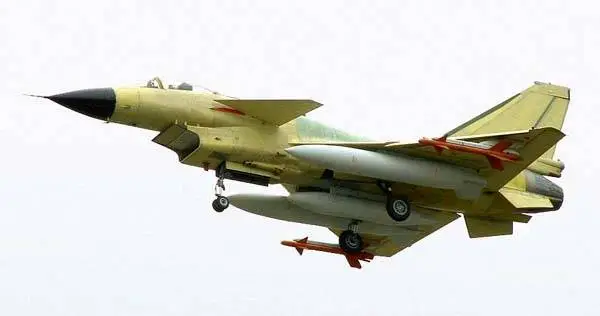
Official photographs of the fighter were published in 2007. Based on photographs, it became clear that the J-10 was made according to the canard aerodynamic design with a triangular mid-wing, close to the PGO wing, and a single-fin vertical tail. The air intake is located under the fuselage.
The Chinese media published information that the airframe's design, made on the basis of aluminum alloys, contains a large proportion of composite materials. The serial J-10A fighter is designed to be statically unstable, which should provide a high level of maneuverability. This required the use of a fly-by-wire control system with quadruple redundancy and a high-performance computing system.
Chinese sources claim that the J-10A is equipped with a proprietary Type 1473 radar. This radar is capable of detecting a MiG-21 aircraft at a range of up to 100 km. The developer claims that the Type 1473 station, with a digital weapons control system, can simultaneously track up to 10 air targets and fire medium-range missiles at two of them. That is, the characteristics of the Chinese radar are slightly superior to the Soviet radar N001E radar, installed on the Su-27SK fighter.
The J-10A avionics also includes satellite and inertial navigation equipment with a digital flight data computer, HUD and a radar warning system.
The internal supply of aviation kerosene is 4 liters. Additional fuel tanks can be suspended on the inner underwing and central ventral pylons. To increase the range and flight duration, the J-950A has been equipped since 10 with an in-flight fuel intake system.

Open sources say that the J-10A fighter with a maximum take-off weight of 19 kg, equipped with an AL-277FN turbofan engine, has a combat radius of up to 31 km. At high altitudes, the maximum flight speed can reach 800 km/h. Cruising - 2 km/h. Without turning on the afterburner, the aircraft can accelerate to 340 km/h. Ceiling – 970 m. Thrust-to-weight ratio with a curb weight of 1 kg – 110.
The J-10A is armed with a 23 mm Type 23 built-in cannon (a Chinese copy of the GSh-23). To combat an air enemy, close combat missiles with an infrared seeker PL-8 or Russian R-73 can be used. For missile duels or interception of enemy bombers at medium range, missile launchers with a semi-active radar seeker PL-11 were originally intended.
In total, the J-10A has 11 external hardpoints that can accommodate a 7 kg payload. It is reported that in order to increase combat capabilities, modern highly maneuverable close-combat missiles PL-250 have been introduced into the armament, which are allegedly superior to the Russian R-10 available in the PRC.
The PL-12 missile launcher with an active radar seeker should increase its fire capabilities at a greater range.
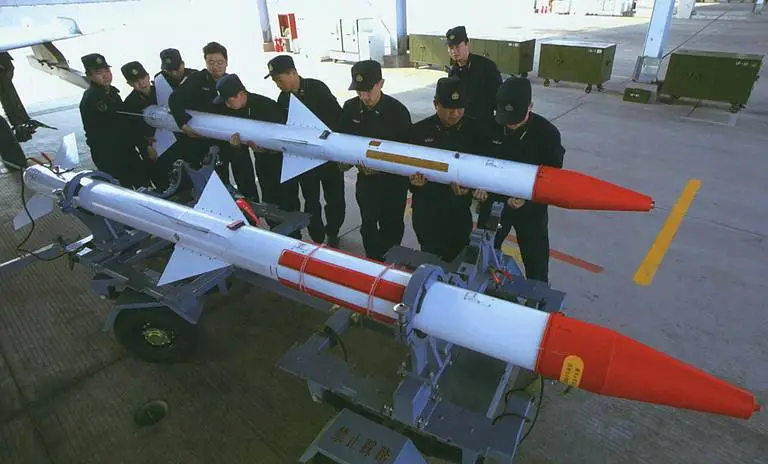
The PL-12 missile in the United States is considered a Chinese analogue of the AIM-120 AMRAAM. However, the PRC traditionally claims that this is a purely Chinese development. The missile weighing about 200 kg with a dual-mode solid propellant engine is equipped with an active radar homing head and is capable of hitting targets at a range of up to 80 km.
Soon after the J-10A was put into service, production of the two-seat combat training modification J-10AS began.
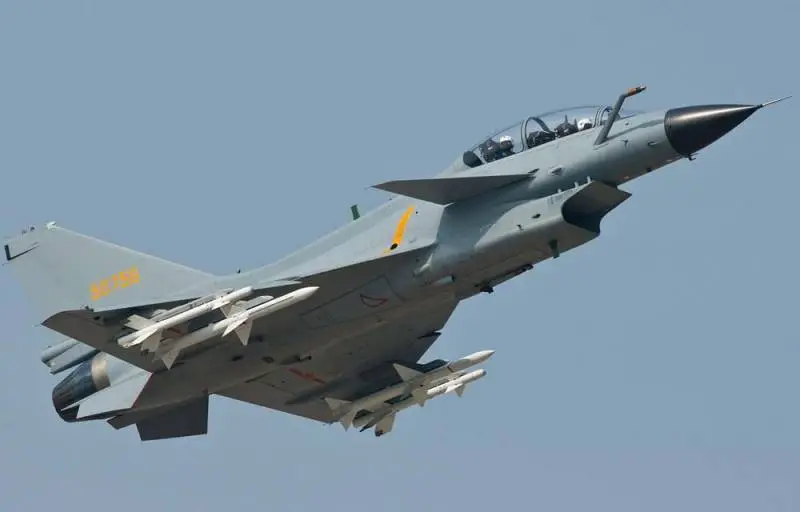
This aircraft is equipped with a full set of on-board equipment and weapons, but has a shorter flight range. Typically, in combat squadrons there are two twins for every ten single-seat vehicles.
Since 10, the assembly of J-1994 family fighters has been carried out at the Chengdu Aircraft Industry Group (CAIG) in Chengdu.
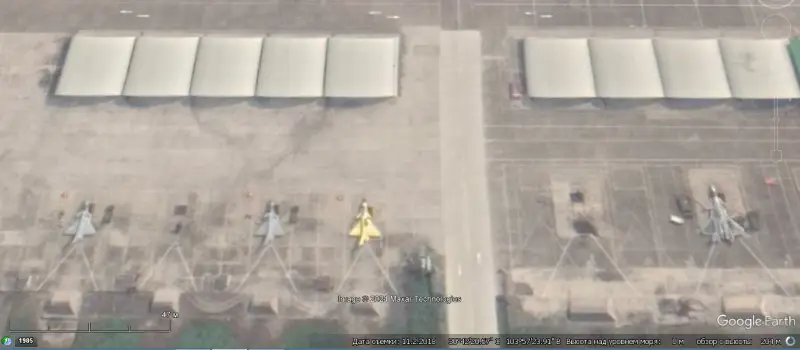
Google Earth satellite image: J-10 and J-20 fighters at the factory airfield in Chengdu
About 10 years ago, deliveries of improved J-10B fighters began at an average rate of 30 aircraft per year. The main difference between the J-10B and the previous modification is the use of a new radar with AFAR.
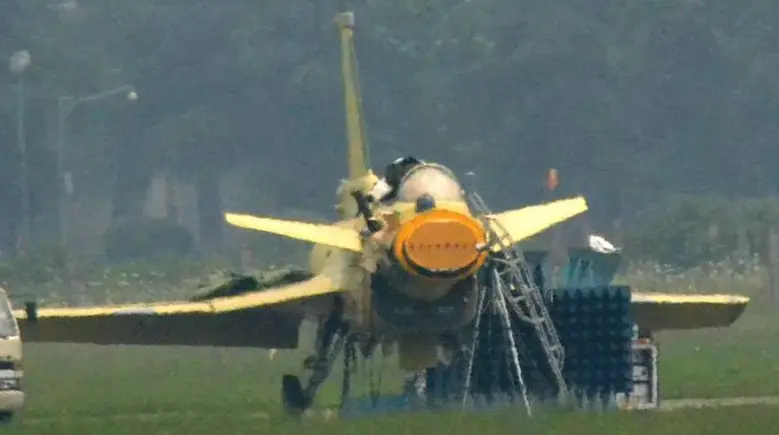
Due to the absence of a heavy antenna rotation mechanism, it is possible to reduce the weight of the radar and make the aircraft lighter. The J-10B also received a highly efficient passive optoelectronic station for detecting targets by thermal radiation. Initially, the serial J-10B was equipped with a Russian-made AL-31FN turbojet engine. However, Chinese sources claim that since 2016, aircraft have been equipped with WS-10A turbofan engines.
The last known production modification in this family is the J-10C, photographs of which appeared in mid-2017.
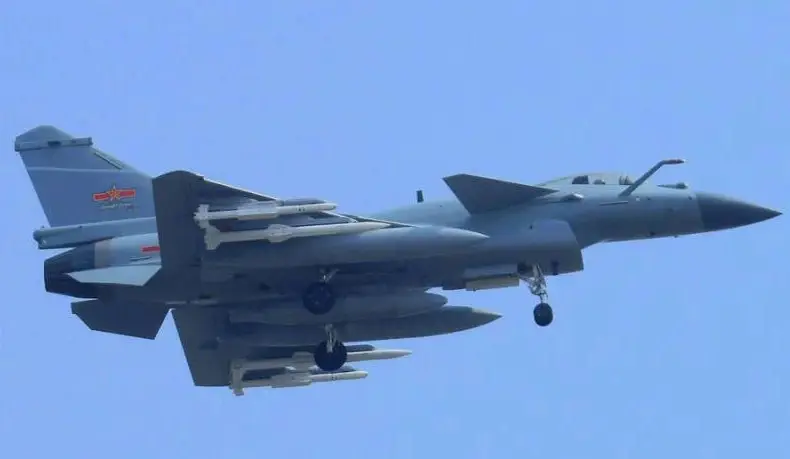
The J-10С fighter is armed with PL-10 short-range missiles (range up to 20 km) with the latest long-range PL-15. Taking into account the fact that, according to Western data, the launch range of the PL-15 can reach 150 km, the J-10C fighter must have a radar with very high energy indicators.
The design of the J-10C airframe implements a number of technical solutions aimed at reducing radar signature, mainly through changing the shape of the air intake and the widespread use of composite materials. But, apparently, few aircraft of this modification were built. Fresh satellite images of the factory airfield in Chengdu show that there are no new J-10 fighters there. Apparently, the plant is completely reoriented to produce the new generation J-20 heavy fighters.
As for the combat characteristics of the J-10 available in service, they are quite high. These light fighters play a significant role in providing air defense to the PRC and can be used to gain air superiority.
In training air battles with the Su-27SK and their Chinese J-11 clones, it turned out that due to their good maneuverability, the light J-10A are difficult opponents. The fairly high parameters of the radar, the presence of long-range radar-guided missiles in the armament and good acceleration data make the J-10 fighters a good short-range interceptor.
For naval aircraft, the ability to carry YJ-704 and YJ-91 anti-ship missiles is especially important. However, information recently appeared that the naval J-10A is planning to be transferred to the PLA Air Force, since a single-engine fighter, for safety reasons, is not optimal for flights over the sea.
Heavy fighters J-11 and Su-30MK2
In 2022, the air divisions of the Northern and Southern Fleets included aviation regiments (22nd, 24th, 25th) armed with J-11B and J-11BS heavy fighters based at Suijun, Linggao and Ledong airfields. Linggao and Ledong air bases are located on Hainan Island.
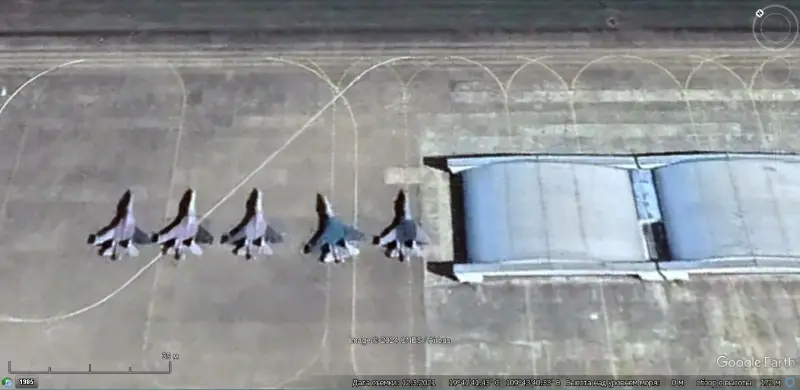
Google Earth satellite image: J-11 fighters at Linggao Air Base, Hainan Island
History J-11 fighters began shortly after the first batch of 1992 Su-8SK and 27 Su-4UBK was officially accepted by Chinese representatives in June 27. Single-seat Su-27SKs were produced at the Komsomolsk-on-Amur Aviation Production Association named after. Yu. A. Gagarin (KnAAPO), and the sparks were assembled at the Irkutsk Aviation Production Association (IAPO). Along with the Su-2SK/UBK aircraft, spare parts and R-27 and R-73 air combat missiles were supplied from Russia.
Having tested the Su-27SK/UBK, the Chinese side proposed organizing joint licensed production in China. In 1996, as part of a contract worth $2,5 billion, Sukhoi and Shenyang Aircraft Corporation entered into an agreement to build two hundred Su-27SK fighters under the designation J-11 at an aircraft plant in Shenyang (Liaoning Province). The first J-11 took off in 1998.
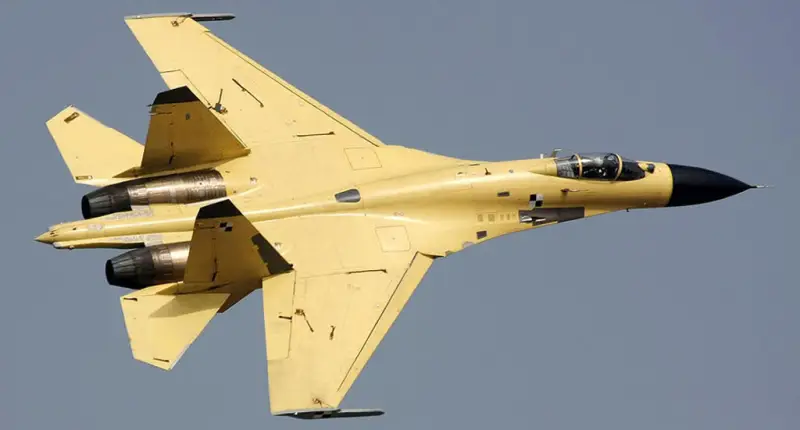
Assembly kits and avionics for the first J-11s were delivered by transport aircraft from Komsomolsk-on-Amur, but over time the PRC began producing its own components.
The fighters assembled in Shenyang were initially identical to the Russian export Su-27SK; they were also equipped with N001E radar, an optoelectronic station and RLPK-27 weapons control equipment. The detection range of a MiG-21 type target was 70 km, the maximum detection range of the Tu-16 was 110 km. The airborne radar station could track up to 10 targets and simultaneously fire at two of them. Taking into account the fighters assembled under license, China received a total of 283 units.
The first licensed aircraft were delivered to the same aviation regiments that already operated the Su-27SK delivered from Russia. In total, 105 licensed J-11 fighters were assembled in China. A significant portion of the aircraft were equipped with Chinese-made avionics. After 105 J-11 aircraft were delivered under the license, the Chinese side terminated the agreement, citing the “low combat performance” of Russian fighters.
After the production of main components and assemblies was localized in China, and Chinese research institutes successfully developed their own electronic components, our “strategic partner” decided not to spend money on purchasing aircraft that it could successfully produce itself. Technologies received from Russia allowed the Chinese aviation industry to make a qualitative leap, bringing it to a new level of development.
In a short period of time, China has managed to catch up with a 30-year gap in this area. For quite a long time, the PRC was unable to establish the production of modern aircraft engines with the necessary service life and high reliability, and China purchased 290 AL-31F aircraft engines from Russia, which were installed on the Su-27SK and J-11 fighters.
Despite the extremely unpleasant and very significant incident for Russia with the refusal to license the construction of the Su-27SK, military-technical cooperation in the field of combat aviation between our countries has not stopped.
The two-seat multirole fighter Su-1999MKK was created especially for China in 30. Unlike the Indian Su-30MKI, the fighter, created by Chinese order, was distinguished by a larger vertical tail surface, as well as standard production AL-31F engines without a thrust vector control system.
In addition, the Chinese version did not have a destabilizer installed. Thanks to additional fuel tanks, the combat radius has increased significantly compared to the Su-27SK.
At the time of its creation, the Su-30MKK was superior to all production combat aircraft available in the Russian Air Force. The fighter received a new on-board radar and optoelectronic station and weapons control system. Information is displayed on multifunctional LCD displays. The introduction of air-to-ground guided weapons has significantly expanded strike capabilities.
In total, China received 76 Su-30MKK fighters. The total amount of the transaction, taking into account additional supplies of consumables, spare parts and weapons, exceeded $3 billion.
For the PLA Navy aviation, in 2004, 24 two-seat Su-30MK2 were purchased, which entered the 10th Regiment of the 4th Fighter Aviation Division of the Eastern fleet.
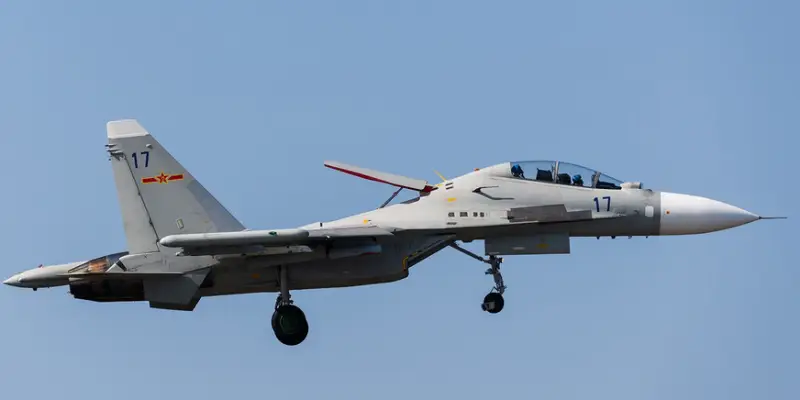
Unlike the previously delivered two-seat Su-27UBK, the multi-role Su-30MK2 is capable of performing combat missions involving long range and flight duration. The Su-30MK2 used in-flight refueling systems, navigation systems, and group action control equipment was introduced. Due to the installation of new missiles and a weapons control system, the combat effectiveness of the aircraft has been significantly increased.
The maximum take-off weight of the Su-30MK2 is 34 kg. Two AL-500F turbofan engines provide a maximum flight speed at an altitude of 31 km/h, and at the ground – 2 km/h. The practical range is 100 km, with one in-flight refueling – up to 1 km. Service ceiling – 400 m.
A 30-mm GSh-301 cannon with 150 rounds of ammunition is installed on the right side of the wing. 12 pylons can accommodate a load weighing 8 kg, each individual pylon can carry up to 000 kg. To combat enemy air, there are R-1 close-range missiles and R-500 medium-range missiles. The combat load includes bombs weighing up to 73 kg, as well as air-to-surface missiles Kh-27T/L, Kh-1ML, Kh-500A/P and S-29L, Kh-25ME.
Having studied the Su-30MKK and Su-30MK2 in detail, Chinese specialists began to further improve the J-11 fighters being mass-produced. After the refusal of the license agreement, the Type 11 radar was installed on the J-1492A, which was previously intended for the J-8D interceptor.
The J-11A fighter also received Chinese-made WS-10A engines, created at the 606th Shenyang Research Institute of the Ministry of Aviation Industry.
American sources claim that the appearance of the WS-10A is largely due to the fact that in 1982 the United States sold two CFM56-2 turbofan engines produced by CFM International to China “for testing.” Engines of this type were installed on the Douglas DC-8 and Boeing 707 airliners. Although the CFM56-2 is a civil engine, its main components - a high-pressure compressor, a combustion chamber and a high-pressure turbine - were also used in the General Electric F110 turbofan, which in turn was installed on 4th generation fighters F-15 and F-16.
Since the creation of the first version of the WS-10, Chinese specialists have managed to make significant progress in terms of increasing service life, increasing reliability and reducing weight. According to statements by Chinese representatives made at international aviation shows, the designated service life of the WS-10 is now 1 hours, and the service life between overhauls is 500 hours.
It has also been reported that the engine is being improved, with the version currently being produced using more new composite materials, making it lighter, and thanks to the creation of new refractory alloys for the turbine blades, it can run longer in afterburner mode. One of the latest versions of the WS-10 is capable of developing thrust up to 155 kN. As of today, about 500 WS-10 aircraft engines of various modifications could be assembled in China.
The J-11B fighter differs from the Su-27SK not only in its engine. This aircraft received a frameless cockpit canopy. Thanks to the use of composite materials, the “dry” weight was reduced by 700 kg. The most significant innovation in terms of avionics was the Type 1494 radar with a detection range of air targets of up to 200 km.
The Chinese multi-purpose radar, coupled with a fire control system, is capable of tracking 8 targets and directing 4 medium- and long-range missiles at them simultaneously.
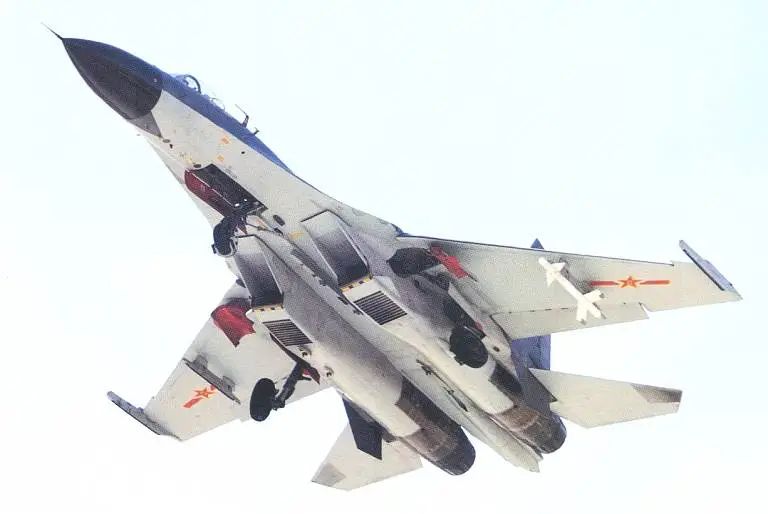
On this fighter, Chinese specialists used nationally developed guided aircraft weapons, abandoning one of the restrictions imposed by the licensing agreement. When concluding a contract for the supply of Su-27SK, the Russian side tried to limit the arsenal of Chinese combat aircraft only to Russian-made weapons, setting a condition prohibiting the replacement of suspension pylons.
The J-11B's armament included PL-8 short-range air combat missiles and PL-12 long-range missiles, as well as its own air-to-surface guided weapons.
A great advantage of the J-11B heavy fighters is the presence on board of equipment that allows them to receive data on the air situation from ground guidance points and AWACS aircraft in an automated mode via a secure radio channel, which allows Chinese pilots to gain information superiority over their enemy.
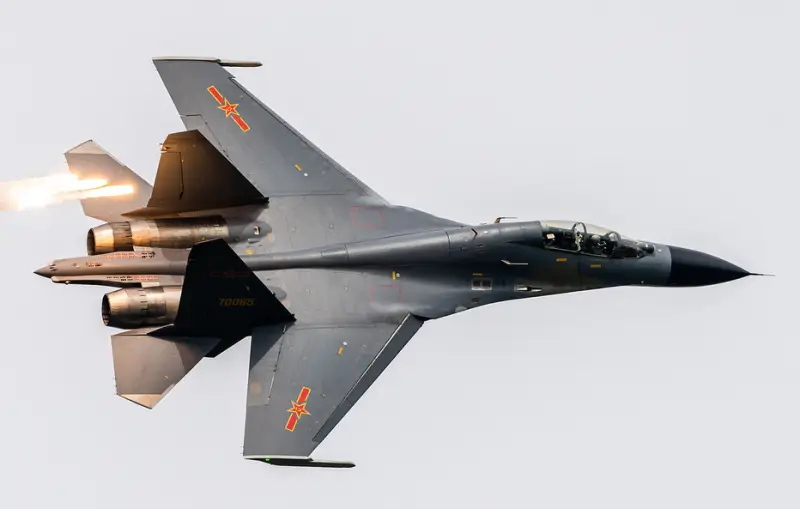
Almost simultaneously with the single-seat J-11B, production of the two-seat J-11BS began. According to Western estimates, aircraft manufacturer Shenyang Aircraft Corporation has already built more than 130 J-11B and J-11BS aircraft.
The two-seat modification was intended to replace the Su-27UBK and Su-30MK2. The presence of a second crew member makes it possible to reduce the pilot’s fatigue and improve his emotional state when performing long flights over the sea, as well as relieve him of the burden when determining his location and in preparation for the use of anti-ship missiles.
In recent years, fighter jets of this type have regularly landed on runways built on disputed islands in the South China Sea.
The ending should ...
Information